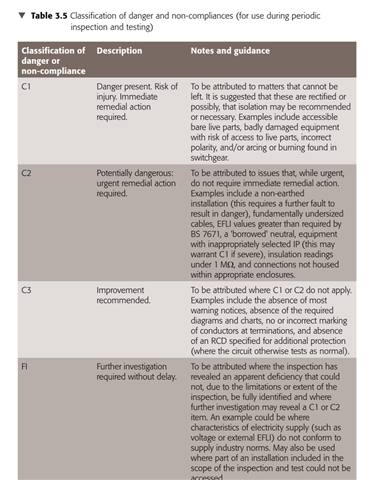In a light industrial environment (dry food packaging factory) we use an external company to carry our EICR inspections on substations and associated sub distribution and fixed wiring every three years.
The EICR has identified that there is no evidence of 6 monthly RCD/RCBO functional tests (there are labels stating last RCD instrument test about 2 years ago) and marked this down as a C2, surely this would only be a C3?
Industrial EICR frequency is recommended between 3-5 years dependent on environment, risk assessment etc. I would accept a C2 if there was no evidence of testing within last 5 years, but surely is a C3 within this period?

